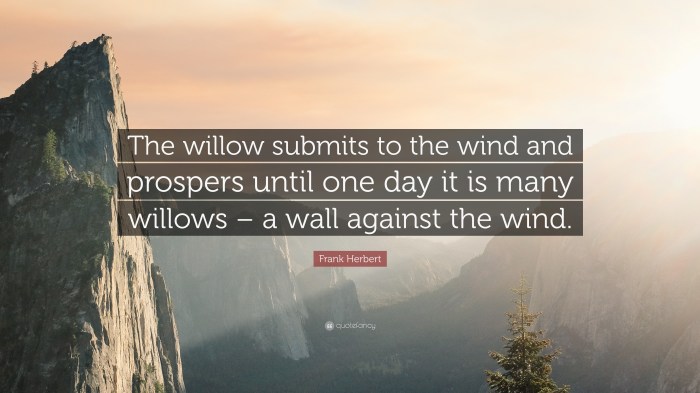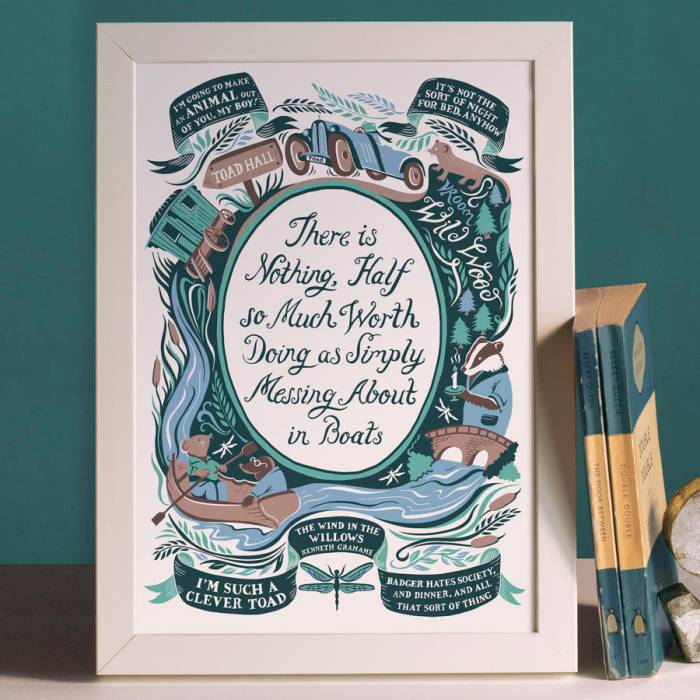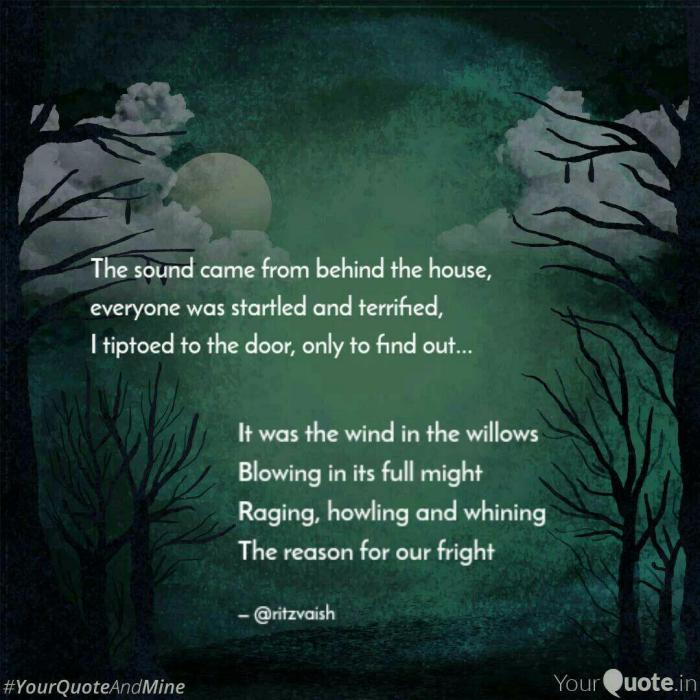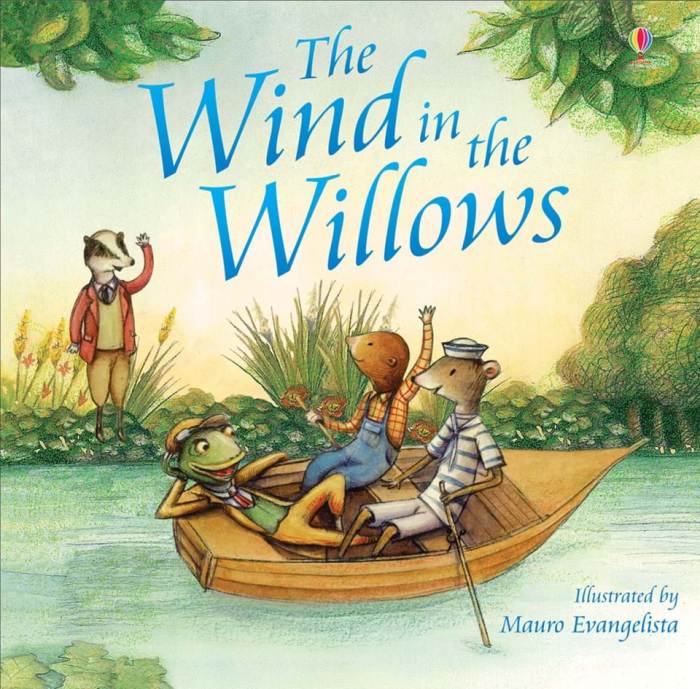Quotes from the wind in the willows – As the beloved children’s classic, The Wind in the Willows, eloquently proclaims, “There is nothing – absolutely nothing – half so much worth doing as simply messing about in boats.” Join us as we embark on a literary adventure, delving into the enchanting world created by Kenneth Grahame and uncovering the profound wisdom and timeless charm embedded within its pages.
From the whimsical characters to the evocative setting and enduring themes, The Wind in the Willows has captivated generations of readers, leaving an indelible mark on the literary landscape. Prepare to be transported to a realm where animals talk, friendships blossom, and the beauty of nature unfolds in all its splendor.
The Characters of ‘The Wind in the Willows’: Quotes From The Wind In The Willows

The characters in ‘The Wind in the Willows’ are diverse and engaging, each with their own unique motivations and personalities. The story centers around four main characters: Mole, Ratty, Badger, and Toad.
The Main Characters
Mole: A kind-hearted and curious creature who loves the simple pleasures of life. He is always eager to explore and make new friends. Ratty: A practical and resourceful water rat who is Mole’s best friend. He is always there to help Mole and provide him with guidance.
Badger: A wise and respected old badger who lives in the Wild Wood. He is a solitary creature but is always willing to help those in need. Toad: A wealthy and eccentric toad who loves to drive fast cars and get into trouble.
He is often selfish and reckless, but he also has a good heart.
The Setting of ‘The Wind in the Willows’

Kenneth Grahame’s classic novel ‘The Wind in the Willows’ is set in the idyllic English countryside, specifically in and around the Thames River. The story unfolds in a tranquil and picturesque setting, where the characters find solace and adventure amidst the natural beauty that surrounds them.
The setting plays a crucial role in shaping the characters and plot of the story. The peaceful and serene atmosphere of the riverbank provides a backdrop for the characters’ leisurely pursuits and playful interactions. The river itself becomes a symbol of freedom and adventure, as the characters embark on exciting journeys and encounters along its winding course.
Symbolism in the Setting
Grahame uses the setting to convey deeper meanings and themes throughout the story. The river, for example, symbolizes the passage of time and the constant flow of life. The changing seasons and weather conditions reflect the characters’ emotional states and the challenges they face.
The idyllic countryside represents a sense of peace and harmony, but it also holds hidden dangers and mysteries. The Wild Wood, a dark and enigmatic forest, symbolizes the unknown and the potential for danger that lurks beneath the surface of tranquility.
The Themes of ‘The Wind in the Willows’

Kenneth Grahame’s classic novel ‘The Wind in the Willows’ explores a multitude of themes, delving into the complexities of friendship, the allure of nature, and the search for identity.
Friendship and Loyalty
The story revolves around the enduring friendship between the four main characters: Mole, Ratty, Badger, and Toad. Their unwavering loyalty and support for one another is tested through various trials and tribulations, highlighting the transformative power of true companionship.
Nature and the Pastoral Ideal, Quotes from the wind in the willows
Grahame paints a vivid and idyllic portrait of the English countryside, capturing the tranquility and beauty of the natural world. The characters find solace and inspiration in their surroundings, emphasizing the restorative and transformative qualities of nature.
The Search for Identity
Each character embarks on a journey of self-discovery, grappling with their strengths and weaknesses. Mole’s timid nature, Ratty’s practicality, Badger’s wisdom, and Toad’s reckless impulsiveness are all explored, showcasing the complexities of personal growth and the search for one’s true self.
The Style of ‘The Wind in the Willows’

Kenneth Grahame’s writing style in “The Wind in the Willows” is characterized by its lyrical prose, vivid imagery, and use of literary devices. The story is narrated in a warm and nostalgic tone, capturing the essence of the English countryside and the adventures of its animal characters.
Use of Literary Devices
Grahame employs various literary devices to enhance the storytelling, including:
- Personification:Animals are given human qualities, allowing readers to relate to their emotions and motivations.
- Metaphor:The river is often described as a living being, reflecting the characters’ connection to nature.
- Simile:Comparisons are used to create vivid imagery, such as “the sun was like a copper disc.”
Impact of the Writing Style
Grahame’s writing style has a significant impact on the story, creating a sense of wonder and enchantment. The lyrical prose immerses readers in the world of the animals, while the use of literary devices adds depth and meaning to the narrative.
The result is a timeless classic that continues to captivate readers of all ages.
The Cultural Impact of ‘The Wind in the Willows’

Kenneth Grahame’s “The Wind in the Willows” has had a profound cultural impact since its publication in 1908. Its whimsical characters, idyllic setting, and timeless themes have resonated with readers of all ages, making it one of the most beloved children’s books of all time.
The story has been adapted into numerous media, including film, television, stage, and radio. The most notable adaptation is the 1949 Disney animated film, which remains a classic of animation and has introduced generations of children to the world of Toad Hall and its inhabitants.
Enduring Popularity
The enduring popularity of “The Wind in the Willows” can be attributed to several factors. Its timeless themes of friendship, loyalty, and the importance of nature continue to resonate with readers of all ages. The characters are also universally relatable, embodying both the virtues and foibles of human nature.
Additionally, the story’s lyrical prose and vivid descriptions of the English countryside have captured the imaginations of readers for over a century. Grahame’s ability to create a believable and immersive world has made “The Wind in the Willows” a classic of children’s literature.
Commonly Asked Questions
Who are the main characters in The Wind in the Willows?
The main characters include Mole, Ratty, Badger, and Toad.
What is the significance of the river in the story?
The river serves as a central symbol, representing the journey of life and the interconnectedness of all living creatures.
What are the main themes explored in The Wind in the Willows?
The story explores themes of friendship, loyalty, adventure, and the importance of embracing the simple pleasures in life.